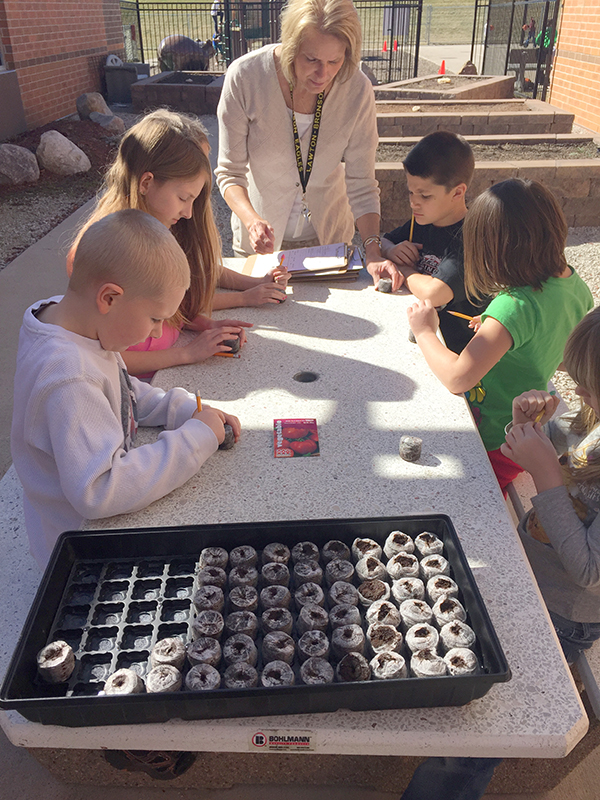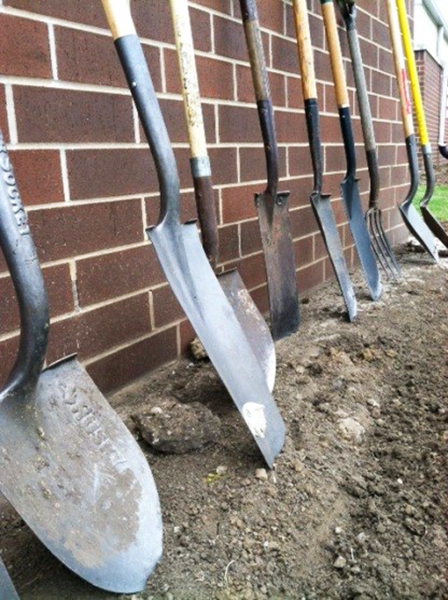
I believe every school should have a garden. Think back to your education, what do you remember? What teacher had an impact? I bet those memories are tied to an activity or teacher who brought innovation and experiential learning to the classroom.
What makes a school garden successful?
Purpose, People and Passion

“Gardening requires lots of water – most of it in the form of perspiration.”
-Lou Erickson
Purpose:
The success of a school garden depends upon the fertility of the soil and the number of times the garden is used. The garden has to have purpose. The class has to have a reason to visit the garden, if not it sits idle, full of potential and completely untapped. Bring the class to the garden every day, even if just for a minute. A garden that is seen is a garden that thrives.
Find curriculum that enhances the classroom academic standards. Use curriculum that gives you a reason to spend time in the garden; incorporate science, math, English, reading, nutrition and exercise into garden time. If the garden has purpose, it will be used and it will produce more than fruit; it will produce knowledge, understanding, application, and change.
People:
It’s nearly impossible to build, maintain and grow a school garden by yourself. It takes a team of people. Create a committee; include staff, custodial team members, administration, parents and students. Communicate frequently, share a vision and move forward together.
Passion:
A garden is living and it takes dedication to make it productive, especially in a school setting. Most school gardens begin when one or two individuals have a strong desire. Passion can dwindle as weeds grow, in addition to time and financial constraints. The passion to keep a garden growing must be continually fertilized with a positive, can-do attitude.

I previously blogged about one of the gardens I helped build. Learn about our process here.

Resources to begin your own school garden:
Nutrients for Life Foundation
Make science relevant for your students with a topic that affects them every day– soil. These free interactive lesson plans, videos, and classroom tools promote a deeper understanding of core science concepts as your students discover the complex world of soil. This hidden ecosystem not only supports food production, but nearly every form of life on Earth! Take your students on a fascinating journey to unearth the ways science is helping to feed them, their families, and the world.
Build your own “Garden Kit” of resources from our extensive list of materials. To get your class garden started, we suggest requesting the following:
- Download our readers series (1st & 2nd grade, 5th & 6th grade, and 7th & 8th grade)
- Elementary Curriculum
- NPK Soccer Poster (in English and Spanish)
- Digital Explorations: Exploring Plant Nutrients
- Grow A Garden Guide in English and Spanish
Junior Master Gardener Program
The Junior Master Gardener curriculum engages children in novel, “hands-on” group and individual learning experiences that promote a love of gardening, develop an appreciation for the environment, and cultivate the mind.
USDA Farm to School
With more than 7,000 school gardens across the nation, many school districts are using gardens to grow healthy habits in cafeterias, classrooms, and communities. This new fact sheet provides guidance on using school garden produce in the cafeteria, agriculture education, food safety, incorporating gardens into Summer Food Service Programs and early child care settings, staffing, and funding.

Do you already have a school garden or are planning to start one? We’d love to come along for the ride! Tag us @Nutrients4Life.






